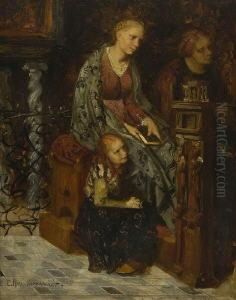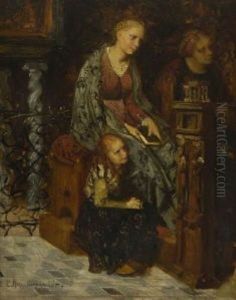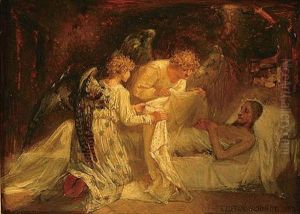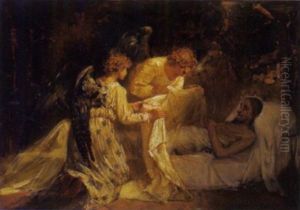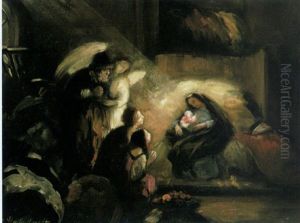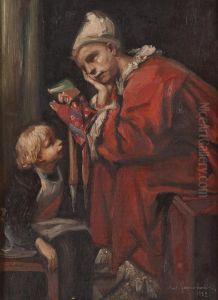Ernst Christian Pfannschmidt Paintings
Ernst Christian Pfannschmidt was a notable German painter and illustrator, born in 1826 in Berlin. His artistic journey is a testament to the rich cultural tapestry of 19th-century Germany, a period marked by a burgeoning interest in romanticism and a deepening appreciation for historical and biblical subjects in art. Pfannschmidt's body of work is distinguished by its meticulous attention to detail, vibrant use of color, and a profound ability to evoke emotion and narrative depth in his depictions.
Educated at the Prussian Academy of Arts in Berlin, Pfannschmidt was deeply influenced by the teachings of renowned artists of the time, who emphasized the importance of classical drawing techniques and the study of historical themes. This education laid the groundwork for his later works, which often explored religious and mythological motifs, imbued with a sense of romanticism and a deep reverence for the past.
Pfannschmidt's contributions to the world of art were not limited to his paintings; he was also a prolific illustrator, contributing to various publications and books of the era. His illustrations often accompanied texts that delved into themes of folklore, history, and religion, allowing him to further explore the narrative potential of visual art. This dual focus on painting and illustration helped cement his reputation as a versatile and skilled artist, capable of capturing the essence of a story both through detailed illustrations and expansive canvases.
Despite his considerable talent and contributions to German art, Ernst Christian Pfannschmidt remains a somewhat underappreciated figure in the broader landscape of 19th-century European art. His death in 1910 marked the end of a career that had spanned over six decades, during which he had navigated the complexities of an evolving artistic landscape while remaining true to his stylistic and thematic interests. Today, Pfannschmidt's work offers a fascinating window into the romantic and historical preoccupations of his time, showcasing the enduring power of narrative and detail in visual art.
